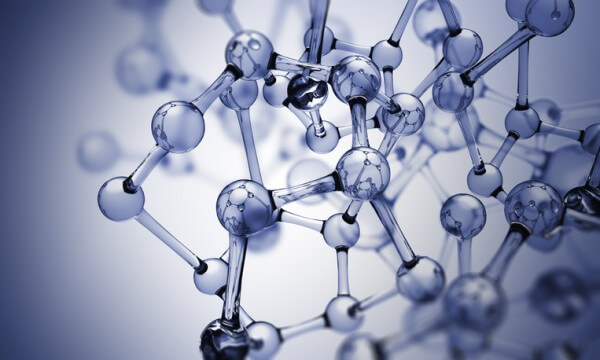Interactions of foods and medicines with on-site drug tests

The standard procedure for workplace drug testing is to screen workers on-site using a urine or oral fluid drug testing device that detects broad classes of chemicals; usually opiates, benzodiazepines, amphetamine-type stimulants, cocaine and cannabinoids. If a screening test indicates a negative result then workers are allowed to return to work. If the test result is non-negative (or sometimes called a provisional positive result) then a specimen is sent for laboratory confirmation of the specific drug identity and its concentration. A confirmed positive test result represents a breach of workplace drug policies.
The broad classes of drugs in screening tests are detected by a system using immunological methods. That is, the test device uses antibodies that recognise key parts of the drug molecules. This means that ALL chemicals that are sufficiently similar to the drug class being detected may contribute to the test result, even if they are not themselves members of that drug class. This has led to the suggestion on internet sites and in the popular press that on-site testing devices may give ‘false positive’ results for people being tested who are not consuming illicit drugs.
First, we must recognise that while there is the potential for on-site screening to detect non-drug molecules, the laboratory confirmation is specific, selective and accurate. The drugs are identified by their molecular mass spectrum (a sort of fingerprint for chemicals) and there is little or no opportunity for misidentification. For example, if cocaine is detected, then it is cocaine and not some innocuous food chemical. If methamphetamine is detected , it cannot be confused with pseudoephedrine, and so on.
When it comes to screening, there are two main types of interaction. The first is where a drug class is identified because a related substance is present. The second is where something unrelated to the drug class has interfered with the test result.
Examples of the first case include;
- Pseudoephedrine will give a non-negative test result for amphetamines or methamphetamine. This is not a false test result. The test has detected an amphetamine-type substance. The worker may declare pseudoephedrine (found in cough and cold remedies) but a laboratory confirmation is still required to positively identify this is the drug that is present.
- Dextromethorphan and pholcodine (found in various cough medications) are related to codeine and morphine and will be detected as members of the opiate drug class in on-site tests. This is not a false test result. Again, declared medication containing these drugs will be confirmed by laboratory analysis.
- Drugs of the class detected are present at sufficient concentration to give an on-site non-negative result but the specific drug identities are present at below reporting targets or cut-off concentrations for confirmation. This is not a false test result. For example, methamphetamine, amphetamine and MDMA are each present in urine at 18ug/L. in total this is 54ug/L and will yield an on-site non-negative test result. The individual drugs are below 25ug/L and will be reported as negative by the laboratory.
- Hemp seeds sold in Australia are required to be ‘THC-free’ but in reality means that only slight traces of THC are present. THC may be detected in workers who consume hemp seeds that do not comply with Foods Standards Australia New Zealand specifications. This may give on-site detections (non-negative) for cannabinoids that are then confirmed as THC by the laboratory. This is not a false result. THC is one of the active constituents of hemp seeds and cannabis and there is no difference in the properties of THC from either source. The on-site detection cut-off or target concentration takes into account incidental exposure to traces of THC. If THC (or total cannabinoids) exceeds the target or cut-off concentration then the specimen donor would have experienced the euphoria and other effects associated with cannabis consumption.
- Workers consuming poppy-seed products will likely have a non-negative on-site test result for opiates and may have morphine and codeine confirmed at concentrations exceeding cut-offs in their specimen. Again, this is not a false result as codeine and morphine may be detected.
- There are few, if any, interferences with benzodiazepines and cocaine.
Examples of the second case are difficult to evaluate. The sporadic or incomplete or incorrect declaration of medications consumed by workers means that associations between non-negative on-site tests and medications are largely anecdotal rather than systematic. Some medicines, such as esomeprazole (Nexium), may interfere with on-site tests. However, this interference usually causes the specimen to be considered ‘suspicious’ or ‘requires further investigation’ and will result in it being sent for laboratory confirmation.
Some foods high in protein may also result in breakdown products that are structurally similar to amphetamine-type stimulants, mainly due to the breakdown of amino acids. This has not been critically reviewed and remains anecdotal, as does the suggestion that curries and other foods may cause a non-negative test result. There is some evidence that some vitamins and supplements, at high concentrations, may influence on-site tests. These include ascorbic acid (vitamin C) and vitamins B6 and B12, and riboflavin. However, these can result in changes in the urine composition (indicating overhydration/dilution, or colour and odour changes) that causes the specimen to be considered ‘suspicious’ or ‘requires further investigation’ and will result in it being sent for laboratory confirmation. Similarly, there is a suggestion that tonic water containing quinine may cause false non-negative test results for opiates or cocaine. Laboratory confirmation will rule out drug exposure.
All in all, the nature and extent of true cross reactivities and drug test interferences are largely unknown. Attempting to defeat a drug test by consuming something that may interact may simply render the specimen suspicious and liable for confirmation testing in any case. The best way to defeat a drug test is to not consume drugs.
